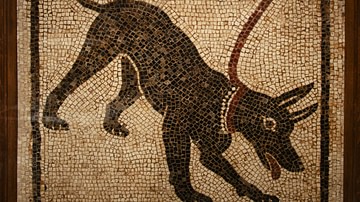Search
Did you mean: Rhodes?
Search Results

Video
Total War History: Battle of Cannae (Part 3/5)
The sun rises, shining on the red flag of battle flying over the Roman camp... Tens of thousands of hooves and boots pound the war drums! Soldiers, now is your hour of valor! Documentary Sources: "The Ghosts of Cannae" by Robert L. O'Connell...

Video
Total War History: Battle of Cannae (Part 1/5)
In 216 BC, at Cannae, the genius of Hannibal Barca was matched against the raw power of Rome's legions. 120,000 men would take part in this colossal clash of titans and make it one of the most studied and emulated battles of antiquity. We...

Video
Total War History: Battle of Cannae (Part 2/5)
Hannibal has shattered every Roman army in his path. In response the senate summoned a monster to slay the Punic foe. The beast they called upon would be the largest combined force ever assembled by Rome so far. The equivalent of 16 legions...

Video
Total War History: Battle of Cannae (Part 5/5)
Tactically the battle has been decided... but the killing has only just begun! We will now have to consider just how the Romans, who still significantly outnumbered their opponents, were massacred so one-sidedly. (Scene of Cannae in military...

Video
Total War History: Battle of Cannae (Part 4/5)
Despite losing their top commanders, the Roman heavy infantrymen press forward. Hannibal and his soldiers must hold back this juggernaut at all cost... if they fail, all is lost! Documentary Sources: "The Ghosts of Cannae" by Robert L. O'Connell...

Article
Dogs & Their Collars in Ancient Rome
Dogs were highly valued in ancient Rome, as they were in other cultures, and the Roman dog served many of the same purposes as it did in, say, Egypt and Persia - as hunters, guardians, and companions - but with a significant difference in...

Article
The Little Girl and the Ghost
The Little Girl and the Ghost is a legend of the Cheyenne nation concerning a young girl abducted by a spirit after she is cast out by her mother. The story explores many themes common in Cheyenne literature, including the importance of following...

Definition
Ancient Egyptian Culture
Ancient Egyptian culture flourished between c. 6000 BCE with the rise of technology (as evidenced in the glasswork of faience) and 30 BCE with the death of Cleopatra VII, the last Ptolemaic ruler of Egypt. It is famous today for the great...

Definition
Anubis
Anubis (also known as Inpu, Inpw, Anpu) is the Egyptian god of mummification, funerary rites, guardian of tombs, and guide to the afterlife as well as the patron god of lost souls and the helpless. He is one of the oldest gods of Egypt, most...

Definition
Chinese Literature
Chinese literature is among the most imaginative and interesting in the world. The precision of the language results in perfectly realized images whether in poetry or prose and, as with all great literature, the themes are timeless. The Chinese...